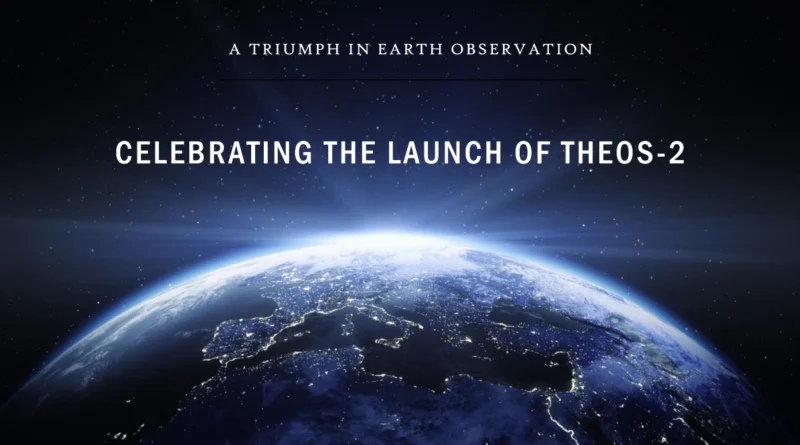The Successful Launch of THEOS-2 Satellite: A Triumph in Earth Observation
Exploring the Airbus-Built THEOS-2 Satellite Launched on a Vega Rocket
In the ever-evolving field of space technology, significant achievements continue to shape our understanding of Earth and its environment. One such achievement is the successful launch of the Airbus-built THEOS-2 Earth observation satellite. This blog delves into this remarkable event, highlighting the key details and significance of this launch. We will explore the technology behind the satellite, the role of the European Space Agency (ESA), and its contributions to Earth observation.
Key Information about THEOS-2 Satellite
| Aspect | Information |
| Satellite Name | THEOS-2 |
| Manufacturer | Airbus |
| Launch Date | October 9, 2023 |
| Launch Vehicle | Vega Rocket |
| Mission Objective | Earth Observation |
The Triumph of THEOS-2: A Closer Look
Introduction to THEOS-2 Satellite
THEOS-2, short for “Thailand Earth Observation System-2,” is an Earth observation satellite designed to capture valuable data about our planet from space. Built by Airbus, this satellite plays a crucial role in monitoring Earth’s environment, making it a remarkable technological achievement.
The Launch from Kourou
On October 9, 2023, the THEOS-2 satellite was successfully launched from Kourou, Europe’s spaceport, using a Vega rocket. This launch marked a significant milestone, and its success opens new horizons for Earth observation technology.
Key Facts about Vega Launcher
| Aspect | Information |
| Launcher | Vega |
| Launch Capability | Placing Medium-Sized Satellites into Polar Orbits |
| First Launch | 2012 |
| Specialization | Small Launcher for Medium-Sized Satellites |
The Role of Vega: ESA’s Small Launcher
Introduction to Vega
Vega, developed by the European Space Agency (ESA), is a small launcher specializing in placing medium-sized satellites into low Earth polar orbits. First launched in 2012, Vega has since played a crucial role in the deployment of satellites for various missions.
Vega’s Niche in Space Transportation
Vega’s unique capability lies in its ability to transport medium-sized satellites into low Earth polar orbits. These orbits are ideal for Earth observation, scientific research, and environmental monitoring. The successful launch of THEOS-2 is a testament to Vega’s reliability and efficiency.
Advancements in Earth Observation with THEOS-2
| Aspect | Advancement |
| 1. Data Collection | THEOS-2 collects valuable Earth data |
| 2. Environmental Insights | Provides insights for environmental monitoring |
| 3. Technological Leap | Airbus’s cutting-edge technology deployed |
| 4. Collaborative Effort | Joint venture by GISTDA of Thailand and Airbus |
Earth Observation with THEOS-2
The THEOS-2 satellite opens new horizons in the field of Earth observation. Here are some key advancements it brings to the table:
- Data Collection: THEOS-2 collects valuable data about our planet, helping us monitor changes, track weather patterns, and gain insights into natural disasters.
- Environmental Insights: It provides critical insights for environmental monitoring. This data can be used to assess the impact of climate change, deforestation, and urbanization.
- Technological Leap: Airbus’s cutting-edge technology is deployed in THEOS-2, making it a sophisticated tool for Earth observation.
- Collaborative Effort: The successful launch of THEOS-2 is the result of a joint venture between the Geo-Informatics and Space Technology Development Agency (GISTDA) of Thailand and Airbus
Conclusion
The successful launch of the Airbus-built THEOS-2 satellite on a Vega rocket marks a remarkable achievement in Earth observation technology. This event highlights the collaborative efforts between countries and organizations to advance our understanding of Earth’s environment. With THEOS-2, we have a powerful tool for data collection and environmental monitoring, which is crucial for addressing global challenges. As technology continues to evolve, we can expect even more remarkable achievements in the field of space technology and Earth observation.
In an era where scientific and technological advancements hold the key to addressing pressing global challenges, the success of projects like THEOS-2 is a beacon of hope. It demonstrates how international collaboration and cutting-edge technology can contribute to our understanding of the world and its environment. The launch of THEOS-2 is a testament to the importance of Earth observation and the role of small launchers like Vega in expanding our knowledge of the planet we call home.
The journey doesn’t end here. The successful launch of THEOS-2 opens up new possibilities for further advancements in Earth observation, which will undoubtedly contribute to our efforts to address environmental and climate-related challenges. As we look to the future, we can anticipate more groundbreaking achievements in space technology and Earth observation, all of which will play a pivotal role in creating a more sustainable and informed world.
Note: The information provided in this blog is based on the latest available sources as of October 11, 2023. For the most up-to-date information, readers are encouraged to refer to official sources and news outlets.
References:




